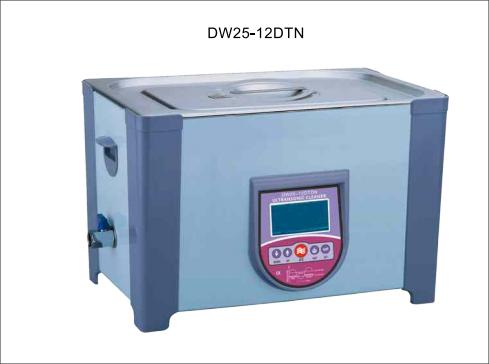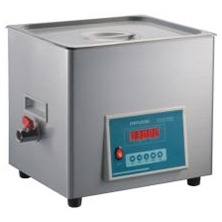You may be curious about the ultrasonic cleaner, thinking about how this thing can clean things at once. This article will introduce you to the principles and uses of the ultrasonic cleaner in detail.
What Are Ultrasound Waves?
It can be divided into 3 types: namely infrasound, sound waves, and ultrasound.
The frequency of infrasonic waves is below 20Hz. The frequency of sound waves is 20Hz to 20kHz. The frequency of ultrasonic waves is above 20kHz.
The infrasound and ultrasonic waves are generally inaudible to the human ear. Due to their high frequency and short wavelength, ultrasonic waves have good directionality and strong penetrating ability, which is why ultrasonic cleaning machines are designed and manufactured.

The Working Principle of Ultrasonic Cleaner
How does ultrasonic cleaner work? The ultrasonic cleaner uses the cavitation, acceleration, and direct flow of ultrasonic waves in the liquid to, directly and indirectly, affect the liquid and dirt, so that the dirt layer is dispersed, emulsified, and peeled off to achieve cleaning. Purpose. In the currently used ultrasonic cleaners, cavitation and direct flow are more widely used.
1. Cavitation of Ultrasonic Cleaner
Ultrasonic waves are transmitted to liquids in the form of high-frequency conversion of compression force and decompression force at more than 20,000 times per second.
When the pressure is reduced, the phenomenon of vacuum nucleus group bubbles will be generated in the liquid. When the compression force is applied, the vacuum nucleus group bubbles will produce a strong impact force when crushed by pressure, thereby peeling off the dirt on the surface of the object to be cleaned, so as to achieve Precision cleaning purposes.
During the ultrasonic cleaning process, the bubbles visible to the naked eye are not vacuum nuclei and group bubbles, but air bubbles, which can inhibit cavitation and reduce cleaning efficiency. Only when the air bubbles in the liquid are completely removed can the cavitation effect of vacuum nuclei group bubbles achieve the best effect.
2. Straight-forward Flow Effect of Ultrasonic Cleaner
The phenomenon that ultrasonic waves flow along the sound propagation direction in liquid is called straight-forward flow.
When the sound wave intensity is 0.5W/cm2, the naked eye can see the straight flow, the flow is perpendicular to the vibrating surface, and the flow velocity is about 10cm/s.
The micro-oily dirt on the surface of the object to be cleaned is stirred by the above straight flow, and the cleaning liquid on the dirty surface also produces convection, and the dissolving liquid that dissolves the dirt is mixed with the new liquid to speed up the dissolution and play a significant role in the transportation of dirt.
3. Acceleration of Ultrasonic Cleaner
The acceleration is generated by the promotion of liquid particles. For ultrasonic cleaning machines with higher frequencies, the cavitation effect is not significant. At this time, the cleaning mainly relies on the acceleration of liquid particles under the action of ultrasonic waves to impact particles for ultra-precision cleaning of dirt.
The Use of Ultrasonic Cleaner
Laboratory equipment will inevitably be adsorbed and polluted by dust and dirt during use, and the maintenance of equipment must be inseparable from cleaning work. The equipment in the warehouse also needs regular cleaning and maintenance, which can also play the incomparable role of ultrasonic cleaning. The scope of application involved in the specific ultrasonic cleaners can be roughly divided into the following aspects:
1. Biochemical Instruments
Biochemical instruments are easily polluted by dust, grease, grease, grinding powder, rust, and oxide film. Manual cleaning is labor-intensive and takes a long time. An ultrasonic cleaner can solve the above problems well.
2. Various Electronic Equipment
After long-term use of electronic equipment, it is easy to absorb dust between the pins of the integrated block, the pins of the components, and the printed circuit board, and some connectors are also easy to be stained with oil and dust. pollution, or the formation of an oxide film. These situations will definitely leave relatively large hidden faults in the regular use of electronic equipment and cause damage to electronic equipment. Ultrasonic cleaners can clean these pollutions simply and conveniently, so as to ensure the perfect use of the equipment.
3. Mechanical Equipment
The scope of mechanical equipment is very wide, such as the transmission equipment used in CNC machine tools and various types of parts, etc. If these equipment or parts are polluted by dirt, grease, grease, grinding powder, rust, and oxide film, it is definitely impossible to clean it by manual cleaning alone, but ultrasonic cleaner can be said to be pervasive, and can thoroughly clean every tiny hole and crevice.

